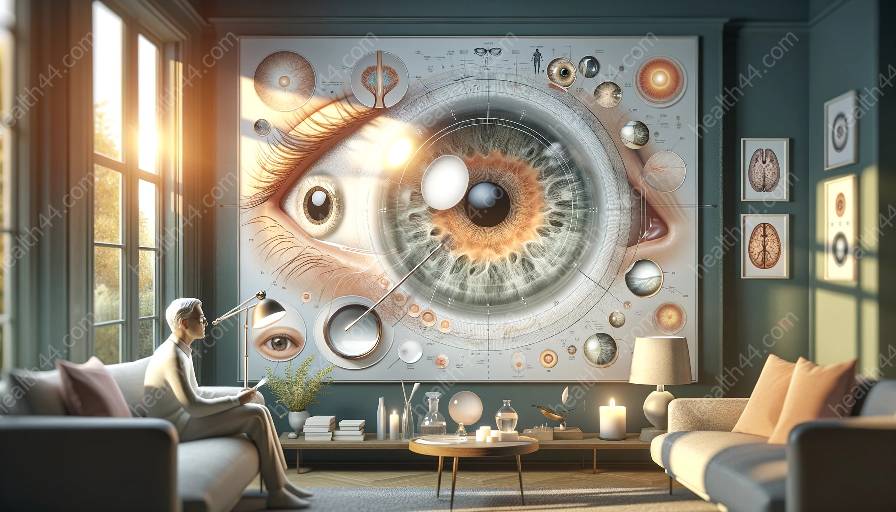When it comes to vision correction, the anatomy of the eye and the specific characteristics of the cornea play a vital role in the selection and fitting of lenses. In this comprehensive guide, we will delve into the fascinating world of corneal curvature, exploring its implications for lens options and providing valuable insights into the interaction between the anatomy of the eye and lens selection.
The Anatomy of the Eye and the Cornea
The human eye is a complex organ with several key components that work together to create vision. One such component is the cornea, which is the clear, outermost layer covering the front of the eye. The curvature of the cornea is a critical factor in determining how light is refracted and focused onto the retina, influencing overall vision quality.
Corneal curvature can vary from person to person, leading to different refractive errors such as myopia (nearsightedness), hyperopia (farsightedness), and astigmatism. Understanding these variations is essential for prescribing the most suitable lenses for vision correction.
Corneal Curvature and Lens Selection
The curvature of the cornea directly impacts the type of lenses that are most effective for correcting specific refractive errors. For individuals with myopia, the cornea is often steeper than average, causing light to focus in front of the retina. To compensate for this, concave (or diverging) lenses, commonly known as glasses or contact lenses with a negative power, are prescribed. These lenses help to diverge incoming light, allowing it to focus directly on the retina, thereby correcting nearsightedness.
Conversely, individuals with hyperopia typically have a flatter cornea, causing light to focus behind the retina. To address this, convex (or converging) lenses, often referred to as glasses or contact lenses with a positive power, are recommended. These lenses converge incoming light, enabling it to focus precisely on the retina and correcting farsightedness.
Astigmatism, characterized by an irregularly shaped cornea, requires specialized lenses designed to correct the distorted focus of light. Toric contact lenses or glasses with astigmatism correction are custom-made to accommodate the specific curvature of the cornea, ensuring that light is properly focused to address both the myopic or hyperopic refractive error and the astigmatism.
Fitting Lenses to Accommodate Corneal Curvature
While understanding the impact of corneal curvature on lens selection is crucial, achieving an optimal fit requires careful consideration of individual anatomical differences. Contact lenses, in particular, must be precisely fitted to account for the unique curvature of the cornea in each eye.
Modern advancements in lens technology have led to the development of customizable contact lenses that take into account the specific curvature of the cornea. This personalized approach to lens fitting allows for greater comfort, improved vision correction, and enhanced overall eye health. Optometrists and ophthalmologists carefully measure the corneal curvature using specialized instruments to ensure that the prescribed lenses conform to the unique anatomical characteristics of each patient's eyes.
In some cases, irregular corneal curvature due to conditions such as keratoconus may require specially designed lenses, such as scleral lenses, which vault over the entire corneal surface to provide stable and consistent vision correction. These advanced lenses offer a solution for individuals with significant corneal irregularities, demonstrating the importance of tailoring lens selection and fitting to the specific anatomical features of the eye.
Conclusion
The intricate relationship between corneal curvature and lens selection is a fascinating area of study within the field of vision correction. By understanding the anatomical differences in corneal curvature and their implications for vision correction, optometrists and ophthalmologists can prescribe the most appropriate lenses to address refractive errors and ensure optimal visual acuity for their patients. As technology continues to advance, the future holds promise for even more personalized and precise lens options that take into account the unique characteristics of the cornea, further enhancing the effectiveness of vision correction.








